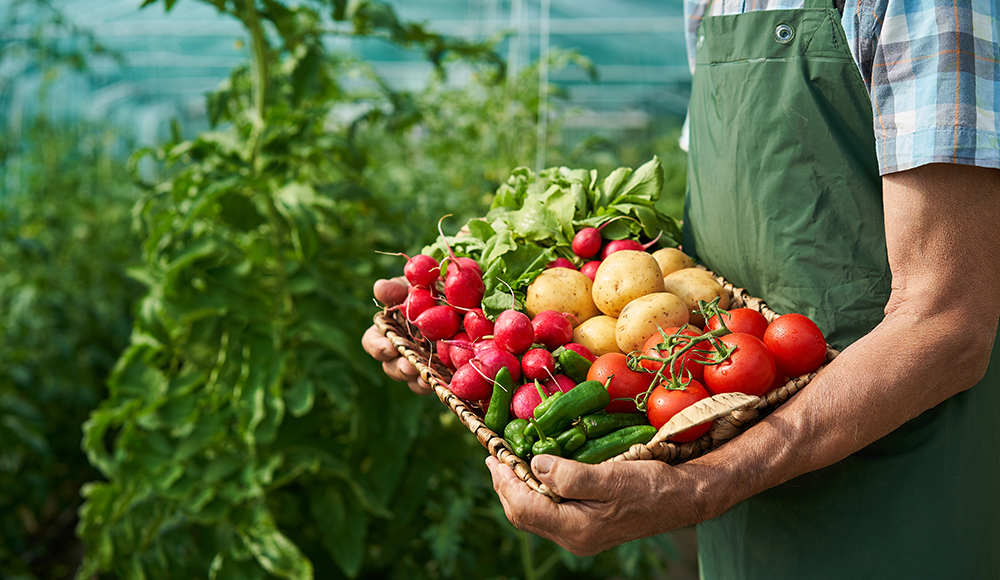Grow Organic Lettuce at Home: Top Tips

Imagine biting into a crisp, freshly picked lettuce leaf, knowing that you grew it yourself, right in your own backyard. There's a sense of pride and satisfaction that comes from growing your own food, and lettuce is one of the easiest and most rewarding vegetables to start with. So, are you ready to embark on this organic gardening adventure? Let's dive into the best tips for growing organic lettuce at home.
Why Grow Organic Lettuce at Home?
Growing organic lettuce at home is not just a hobby; it's an investment in your health and the environment. Homegrown lettuce is fresher, tastier, and more nutritious than store-bought varieties. Plus, you get to choose from a wide range of lettuce varieties, from crisphead to loose-leaf, ensuring a diverse and colorful salad bowl.
Getting Started: The Basics of Organic Lettuce Gardening
Choosing the Right Lettuce Varieties
The first step in your organic gardening journey is selecting the right lettuce varieties. Do you prefer the crunchy texture of iceberg lettuce or the delicate leaves of butterhead? Perhaps you're a fan of the frilly leaves of leaf lettuce or the deeply lobed leaves of romaine. Each variety has its own unique flavor, texture, and growth habits.

Preparing Your Soil
Lettuce thrives in well-drained, loose soil with a pH between 6.0 and 7.0. Enrich your soil with plenty of organic matter, such as compost or well-rotted manure. This not only improves soil structure but also provides essential nutrients for your lettuce plants.
When and Where to Plant
Lettuce is a cool-season crop, preferring temperatures between 60-65°F (15-18°C). It can be planted in early spring or late summer for a fall harvest. Choose a location that receives partial shade, especially in warmer climates, as lettuce tends to bolt (go to seed) in high heat.
Planting Your Lettuce
Seed Sowing
Lettuce seeds are tiny, so it's best to sow them shallowly, about 1/8 inch deep. You can sow seeds directly into the garden or start them indoors in seed trays. If you're planting in rows, space them about 12-15 inches apart.
Transplanting Seedlings
If you started your seeds indoors, transplant the seedlings into the garden when they have 3-4 true leaves. Water them thoroughly after transplanting to help settle the soil around the roots.
Caring for Your Lettuce Plants
Watering
Lettuce requires consistent moisture, especially during hot, dry periods. Aim for about 1 inch of water per week. Mulching around your plants can help retain soil moisture and suppress weeds.
Fertilizing
Since lettuce grows quickly, it doesn't need much fertilizer. A light application of a balanced, organic fertilizer when the plants are about 4 inches tall should suffice.
Pest and Disease Management
Organic gardening relies on natural methods for pest and disease control. Common pests include aphids, slugs, and cutworms. You can deter these critters with diatomaceous earth, neem oil, or even a simple soap and water spray. Crop rotation and proper spacing can help prevent diseases like downy mildew and bottom rot.
Harvesting Your Homegrown Lettuce
When to Harvest
Lettuce is ready to harvest when the leaves are young and tender, usually about 30 days after sowing for leaf lettuce and up to 70 days for head lettuce. Morning is the best time for lettuce harvesting, as the leaves are crisp and full of water.

How to Harvest
For leaf lettuce, you can harvest the outer leaves as needed, allowing the inner leaves to continue growing. For head lettuce, cut the entire head at the base when it's firm and well-formed.
Storing Your Lettuce
Freshly picked lettuce can be stored in the refrigerator for up to a week. Wrap the leaves in a damp paper towel and place them in a plastic bag or airtight container.
Troubleshooting Common Lettuce Growing Problems
Bolting
If your lettuce starts to elongate and send up a flower stalk, it's bolting. This is usually caused by high temperatures or long days. Once lettuce bolts, the leaves become bitter. To prevent bolting, choose heat-resistant varieties and provide some shade during hot weather.
Slow Growth
If your lettuce is growing slowly, it might not be getting enough nutrients or water. Make sure your soil is rich in organic matter and that you're watering consistently.
Conclusion: Embrace the Joy of Homegrown Lettuce
Growing organic lettuce at home is a rewarding experience that offers fresh, delicious salads right at your fingertips. From choosing the right lettuce varieties to caring for your plants and harvesting your homegrown lettuce, each step brings you closer to nature and a healthier lifestyle. So, why not give it a try? Your taste buds and your body will thank you!
FAQs
What are the best lettuce varieties for beginners?
- Some of the easiest lettuce varieties for beginners include 'Black Seeded Simpson', 'Buttercrunch', and 'Ithaca'. These varieties are known for their quick growth and disease resistance.
Can I grow lettuce in containers?
- Yes, lettuce grows well in containers. Choose a container that's at least 6 inches deep and wide, with good drainage. Use a well-draining potting mix and keep the soil consistently moist.
How do I prevent lettuce from bolting?
- To prevent bolting, choose heat-resistant lettuce varieties and provide some shade during hot weather. Keep the soil consistently moist and consider succession planting to ensure a continuous harvest.
What are some good companion plants for lettuce?
- Lettuce grows well with a variety of plants, including carrots, radishes, and herbs like chives and mint. These plants can help deter pests and improve soil health.
Can I grow lettuce indoors?
- Yes, lettuce can be grown indoors with the right conditions. Place your plants near a sunny window or under grow lights. Ensure the temperature stays between 60-65°F (15-18°C) and keep the soil consistently moist.
Happy gardening! Remember, every leaf you grow is a step towards a healthier, more sustainable lifestyle.
0 Response to "Grow Organic Lettuce at Home: Top Tips"
Post a Comment